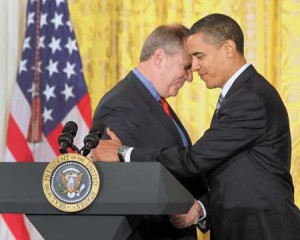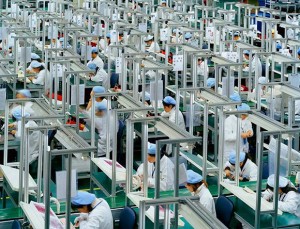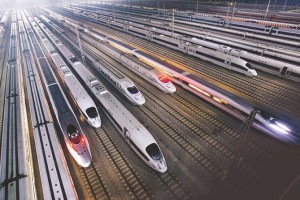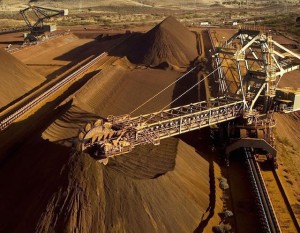10
Aug 2015
YOUR BUSINESS OPPORTUNITIES IN CHINA
Morning glory! This Monday, my morning was greeted with heavy rain and wind as the effect of the Typhoon Soudelor that attacked Taiwan, some parts of China and other regions. By the way, today we will talk about opportunities. I believe in the saying that says “In every darkness, there is a light” meaning that even though the condition is not good, but there is always a way out and an opportunity, so therefore, we have to have a shrewd eyes to see that opportunity. Speaking about which, well, the economic condition here in China is still surviving due to the unstable stock market condition (see the previous article about China’s economy here). But, let’s look the spark light of this condition, moreover what long term opportunities do we have!
There is an interesting analysis by Dave Cote, the chairman and CEO of Honeywell (multinational technology and manufacturing company) that talks about the long term business opportunities in China that we can analyse. And yes, living here in China, I also can see, despite the current unstable economic condition, the developments inside this country are still going strong!
Dave Cote with President Obama
The country’s evolution has been rapid, and the Chinese government has been evolving with the economy, Cote said, ranging from the anti-corruption campaign to the reform of state-owned enterprises.
To pop up a slowing economy, China is taking resolute pro-growth moves including manufacturing and infrastructure investment against economic headwinds as the new Caixin purchasing managers’ index (click here for more information about Caixin PMI) declined to a two-year low of 47.7 in July from June’s 49.4, suggesting weakness in the manufacturing sector.
The National Development and Reform Commission (NDRC), China’s top economic planner, released an action plan on Tuesday to improve the core competence of six manufacturing sectors from 2015 to 2017 (One Belt, One Road is one of them)
The NDRC has several projects planned for railway transportation equipment, ship making and oceaneering equipment, industrial robots, new energy vehicles (read the previous article here about China’s new energy vehicles), modern farm machinery and advanced medical devices and medicine.
“The track record in China is very good when it comes to evolution. It is one of the reasons that I am a long-term bull in China,” Cote said during his visit to China in May.
Inside the Chinese Factory
While still confident of Chinese business prospects despite the economic slowdown, Cote told Xinhua that the prospects will “depend on continuous evolution of the economy and how the government interacts with the economy.”
Under such evolution for more sophisticated manufacturing projects, private investment is particularly wooed to increase financial support and encourage acquisitions of foreign high-tech manufacturers.
“Manufacturing is key in transforming China into an innovation-driven economy. Breakthroughs in manufacturing technology and equipment can bring positive changes to the industrial structure, layout and development mode of a country,” said Zhou Ji, president of the Chinese Academy of Engineering.
Manufacturing output accounted for over one third of China’s GDP, which stood at 63.6 trillion yuan (10.4 trillion U.S. dollars) last year.
In the first half of 2015, the NDRC has approved investment worth of 3.3 trillion yuan in 228 infrastructure projects concerning mainly oil, gas, electricity and Internet facilities.
“Taking railway transportation as an example, investments in this sector will add up to 300 billion yuan this year, exceeding the whole sum of 285.7 billion yuan last year,” said Li Guoyong, with the NDRC department of basic industries. I’ve travelled with bullet train so many times, and it’s super convenient!
China’s Bullet Train
Amid fragile global recovery, China is establishing more pilot free trade zones (FTZs) and accelerating the Belt and Road regional trade and infrastructure network.
China opened three new FTZs in April in Guangdong and Fujian provinces and the northern city of Tianjin 18 months after the launch of China’s first FTZ in Shanghai.
“We believe the FTZs and the Belt and Road initiative will bring unprecedented business opportunities,” said Deng Guojie, chief executive officer of Taikoo (Xiamen) Aircraft Engineering Co. Ltd, a joint venture founded in 1993 that offers airframe and line maintenance services.
The FTZ policies, based on reduced red tape and relaxed rules on foreign investment, have provided more room for Taikoo to expand businesses, especially chances with countries along the Belt and Road as 90 percent of Taikoo customers are from abroad, Deng said.
Sam Walsh, chief executive officer of mining and metals company Rio Tinto, also expressed confidence in expanding businesses in China.
“We believe the urbanization in China will increase demand for iron ore and its large base means that growth should be substantial,” the China Daily quoted Walsh as saying.
The London-based global conglomerate, and also the second-largest Australian miner behind BHP, reported that annual sales last year of iron ore, copper and coal to China were more than 19 billion U.S. dollars, nearly four times sales in Europe.
China will be key to the company’s fortunes in the years ahead, Walsh said, adding that the Chinese-Australian Free Trade Agreement signed in June will also help fuel supply as will the Belt and Road.
“Iron ore is a long-term business and we made our investment plans many years ago. We are confident about the future, especially in China,” he said.
Iron Ore Mining
Latest data concerning China’s use of foreign direct investment (FDI) partly backed up entrepreneurs’ confident claims about the Chinese market.
In the first half of 2015, a total of 420.52 billion yuan in FDI was used in China, a year-on-year increase of 8 percent seen on Friday, expanding lot from the 2.2 percent registered in the same period last year, thanks to the MOC’s expansion of free trade agreements, fewer government restrictions and promotion of opening up in certain industries and inland areas, according to the Ministry of Commerce.
China became the world’s largest recipient of FDI in 2014, with inflows reaching 129 billion U.S. dollars, a 3.7-percent increase compared to 2013, according to the World Investment Report 2015 released by the United Nations Conference on Trade and Development in June.
In contrast, global FDI inflows fell to 1.23 trillion U.S. dollars in 2014, down from 1.47 trillion U.S. dollars in 2013, representing a 16-percent drop, the report said, adding that the fragility of the global economy, policy uncertainty for investors and increased geopolitical risks were the main reasons behind the decline.
“Hope is being able to see that there is light despite all of the darkness – Desmond Tutu”
Source: XinHua News
For more insights of related topic, click here



































